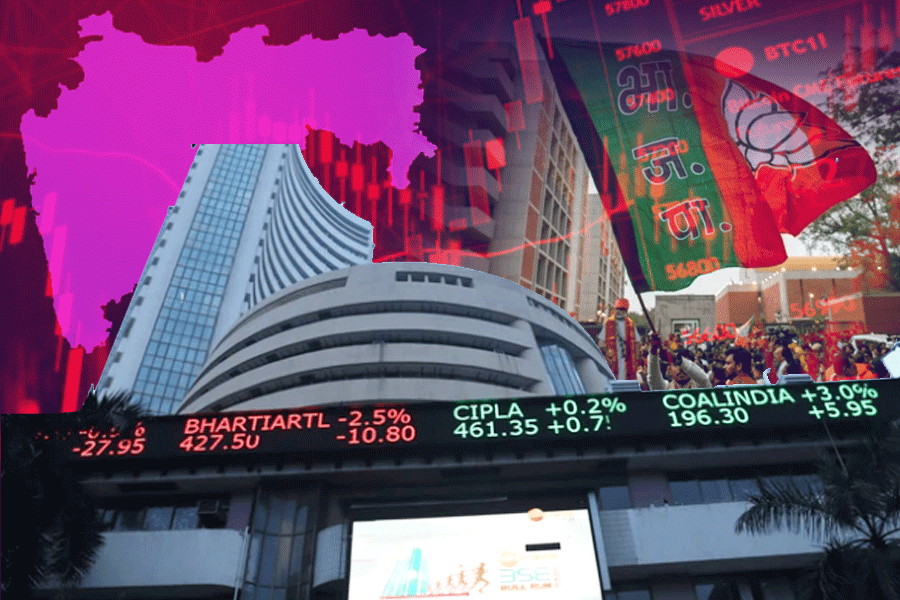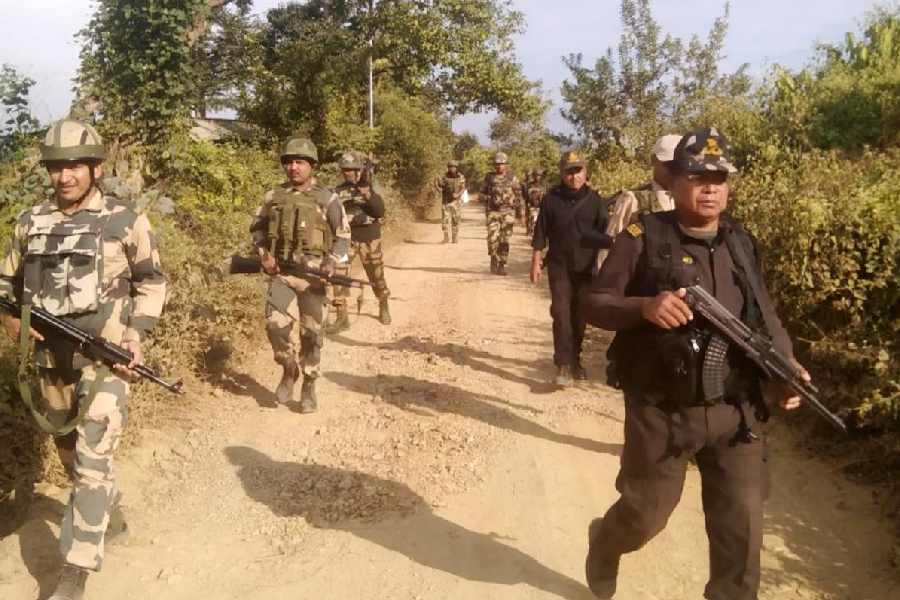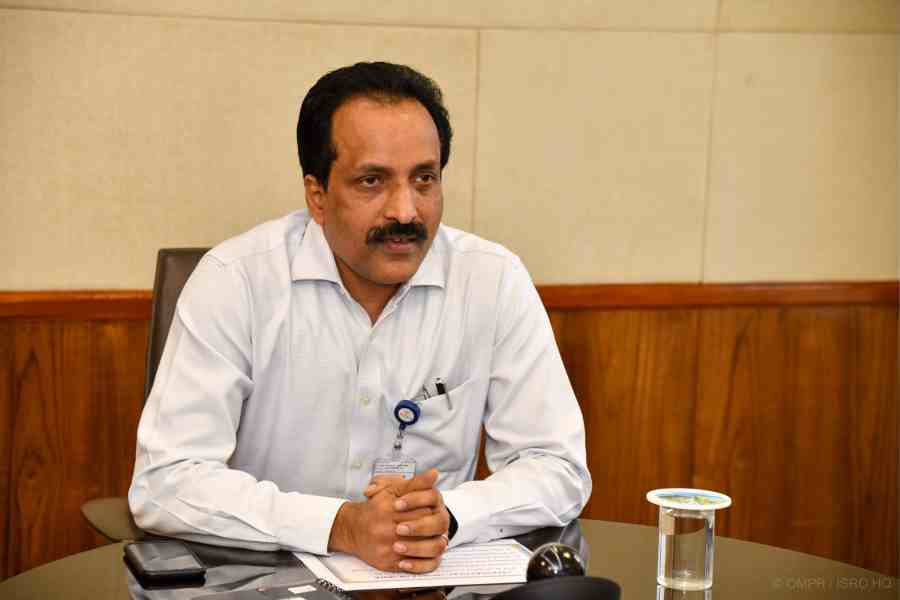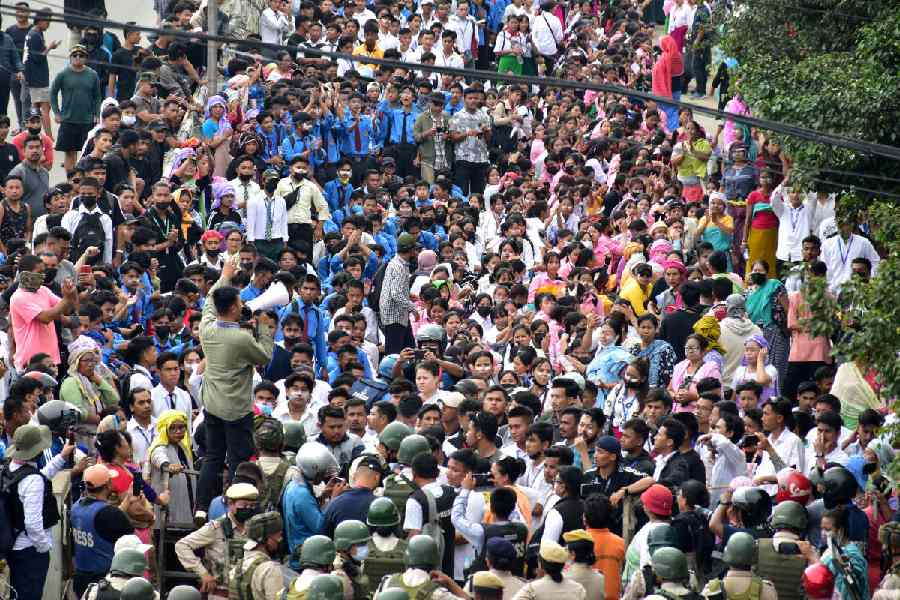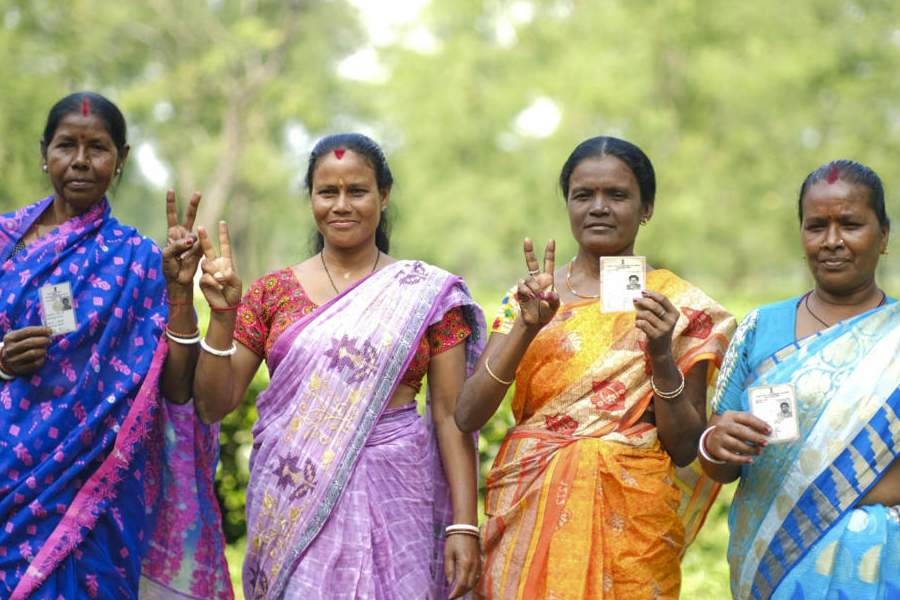With only days before the American elections, India is adopting out-of-the-box tactics to stabilise relations with the United States post the November 3 polls.
Across the board, India’s political leadership and its diplomats are using the space created by electioneering in America to tap hitherto little used sources of support for the Indo-US relationship which are to be leveraged once a new establishment occupies Washington.
The nature of US elections is such that every politician is not involved to the same degree in the campaign. If neither of the two Senators from a state is up for re-election, that state’s governor can breathe easy in an election year -- especially if it is not a toss-up state he may even have time on his hands.
The pace of engagement between New Delhi and, say, Phoenix or Indianapolis, both less cultivated state capitals previously, or with think tanks that are outside the Beltway environs of Washington, could create a new momentum in Indo-US relations.
The expectation is that in the coming months, offshoots of the new approach will show, just as Prime Minister P. V. Narasimha Rao’s landmark decision 25 years ago to break with tradition and appoint lobbyists for India in the US broadened his government’s American outreach.
Where America’s long-time allies are reaching for the moon, as it were, in anticipation of a change in Washington next week, and largely failing in that effort, India’s goals are more modest. New Delhi is using the current phase to consolidate past gains and course-correct its policies on the ground.
There is a populist impression about the “Howdy-Modi” extravaganza in Houston that is far from the truth: that it was all about the Indian Prime Minister and the US President, standing shoulder-to-shoulder declaring an arrangement of mutual admiration. What is not well-known is that Donald Trump did not have a clue about the Houston reception for Narendra Modi until a few weeks before the actual event.
Howdy-Modi: The truth about Trump
The White House representative at the Howdy-Modi programme was to have been Mick Mulvaney, then the President’s Chief of Staff. Trump injected himself into the reception after he heard about it from Modi at one of their bilateral meetings. Being a smart politician, Trump did not want to miss the crowd-waving opportunity or an outreach to Indian Americans.
With or without Trump hotfooting to Houston, Modi would have gone to America’s energy capital last September. There has been a whopping 93 per cent rise in the hydrocarbons trade between the US and India in the last two years. The business was worth $9.2 billion in 2019-20. Demand for energy will double in India in the medium term.
In the skyscrapers that dominate downtown Houston, oil and gas executives are living an Indian dream, the COVID-19 downturn notwithstanding. In part, Modi chose Texas as his destination last year because he was impressed that the state’s Governor, Gregory Abbott, undertook a gruelling nine-day visit to four Indian cities with a high-end business delegation in spite of having to permanently use a wheelchair. Abbott has been re-elected to lead Texas until 2023.
India: robust link-ups
Modi’s visit to the US South, rare for Washington-New-York-centric Indian leaders, had a spill-over effect on states neighbouring Texas. Today, India’s link-ups with Arkansas and Colorado, both neglected in the past, are robust. The governors of both these states have visited India. Howdy-Modi and Trump’s presence on the stage with the prime minister got all the media attention, but the proof of the pudding has been in the eating.
Big countries, even America’s close treaty allies, have been baiting the big fish, as it were, in Joe Biden’s waters once the former vice president’s fortunes began to rise. India’s goals being more modest are, therefore, realistically more achievable than those of more powerful or richer nations.
The reality, which is rarely acknowledged publicly in New Delhi, is that India is a bit player in Washington, Indian TV’s hype notwithstanding. There is absolutely no comparison between US-French relations going back in history to American independence or the British-US umbilical cord to Indo-US ties, which are, in substantive terms, only 20 years old. Until Bill Clinton’s presidency, India and the US only talked at each other. For 52 long years, New Delhi and Washington rarely talked to each other.

In this file photo taken on Wednesday, December 26, 2019, US secretary of state Mike Pompeo and external affairs minister S. Jaishankar address a joint press conference in New Delhi. PTI photo
Three men working as a team
Whether it is Trump or Biden, who will occupy the White House in the next four years, the priority of the next US administration will be trans-Atlantic ties, its own neighbourhood, Russia, China, Japan, the Middle East and the like. Not India. External Affairs Minister S Jaishankar and Foreign Secretary Harsh Vardhan Shringla, both former ambassadors in Washington, know this. Their successor and incumbent, Taranjit Singh Sandhu, a battle-hardened veteran of multiple US postings, knows this only too well. As a team, the three men have worked towards what is possible as Trump’s fortunes receded and Biden’s stars became ascendant.
Sandhu’s diary in the final weeks of the US election campaign is instructive. It shows a laser-sharp focus with eyes not only on the White House, but also on both chambers of the US Congress, which are likely to be controlled by Democrats, come January.
In the second week of October, while the Germans and the British and the Canadians were all chasing after the top guns in the Biden campaign – and failing to meet them – Sandhu went South. Those who know the intricacies of today’s racially polarised America and the interplay between the legislative and executive branches of government will grasp the true significance of why the Indian Ambassador met Bennie Thompson. He is serving his 13th term in the US House of Representatives and chairs the House Committee on Homeland Security, which legislates on immigration.
Thompson, the only Democrat in the Mississippi Congressional Delegation, is a powerful voice in the Congressional Black Caucus, and equally important for India, in the Progressive Caucus. An influential Congressman living in small town Bolton is more amenable to diplomatic persuasion in his backyard than a freshman legislator on the outskirts of Washington or San Francisco.
A day after Michael Bloomberg ploughed $20 million into the campaigns of environment-friendly Democrats this week, Sandhu had extensive discussions with the former New York Mayor on environment, sustainability initiatives and smart cities development. Most people wrote off Bloomberg after his miserable show in the Democratic primaries. But he is spending $100 million in Florida to help Biden win the critical state. Bloomberg will most likely be included in a presumptive Biden cabinet.
Arizona Governor Doug Ducey made a public commitment about future tie-ups with India after Sandhu discussed film and digital media collaboration as well as aerospace and defence technology business prospects between Phoenix and New Delhi.
Because India’s political aims in election-bound US are modest, its diplomats in Washington have used the campaign season hiatus to reach out to American corporate honchos. Milind Pant, CEO of Amway, Jaimie Dimon, Chairman of JP Morgan, Arvind Krishna, CEO of IBM and Alex Holmes, CEO of MoneyGram are just a few business leaders who are looking at post-COVID opportunities in India after structured dialogues with the Indian embassy in Washington.





